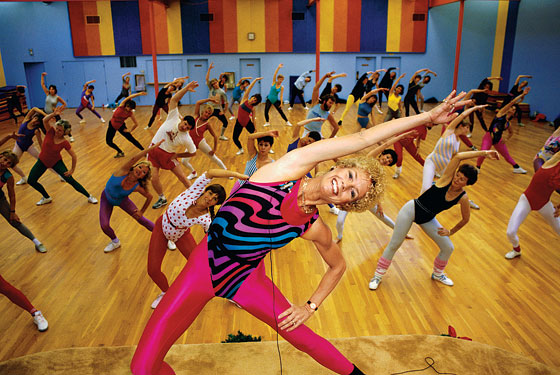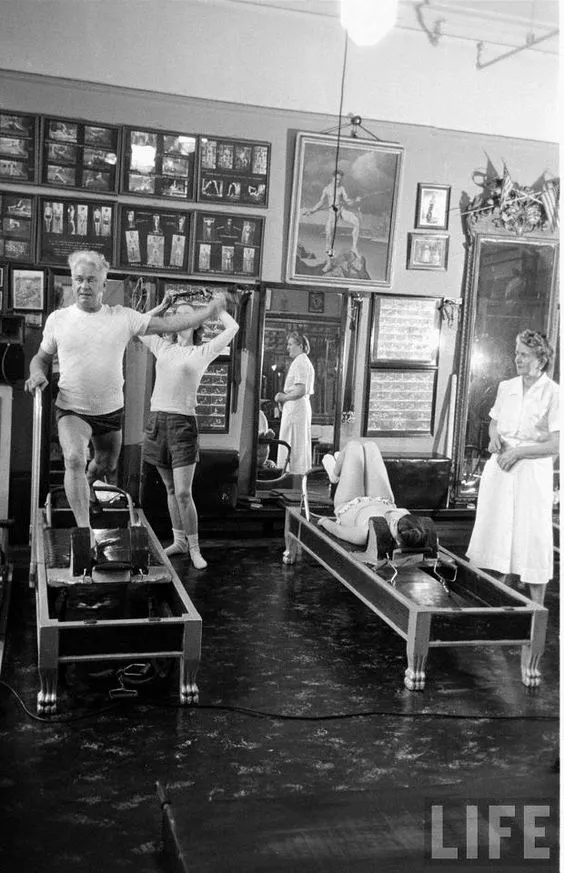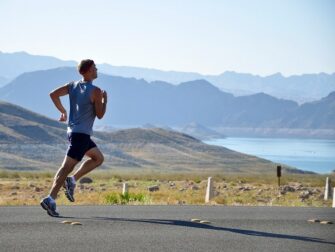A jump back to the 80s
Aerobics was the primary popular activity marked by rapid continuous movement in classes ranging from a few to sometimes one hundred people. Aerobics demanded exertion to the max, inspired or propelled by very loud and ear-damaging music and super-energetic instructors wearing a headset and shrieking over the music. The activity required moving everything on your body that could be moved. You were a slacker if at the end of your session you weren’t sweaty and breathless, carrying a soaked towel, gulping water. A whole industry came into being just to supply the wet wipes to disinfect the floor or the mats. The rooms themselves were hot and stinky, and that was considered to be a good thing. Stretching was done for a few moments at the beginning and a few moments at the end but not to stretch or tone, only to warm up for and cool down from the rigors of the class.

Pounds were shed, buttocks firmed up, legs became defined, and the bodies, pumped as they were with endorphins and adrenaline, exhibited marked changes. People learned the moves, learned how to step up and stay balanced. It was competitive, trying to hear the instructions over the pumping music was a challenge. Eventually when you learned the steps and could visually interpret the instructions, you mindlessly followed along. For a while you felt better and looked better. You had a sense of accomplishment. You came clean. You purged. You made room for more abuse. It was fun, it was social, and it was sexy. Entire lines of clothing were designed for aerobics: body wicking, stink preventing, loose fitting but flattering. Sweatbands were essential, aerobic shoes helpful, and high-impact absorbing socks de rigoeur.
All through the 1980s, aerobics was not only attracting all kinds of people who had never partecipate in organized physical activity unrelated to playing a sport, but it was cutting to barely surviving customers base of the Pilates studio.

A mass movement toward group exercise was underway, but it headed toward high-exertion, vigorous activity, quick fixes, and little regard for the workings of the body: the opposite direction from Pilates. The “new exercise” mocked the learning curve of Pilates and the slow development of the mind-body connection. It had nothing to do with gaining control over your body and its movements. It was not about stretching and flexibility and range of motion and enhancing your everyday movement. And while you felt good after aerobics – sometimes because it was over- you never felt reinvigorated and relaxed as you did after doing Pilates. Certainly, everyone left aerobics with pink cheeks and some energy in the tank, but no one left standing taller and straighter with an easy, relaxed gait.
It turned out that aerobics was also dangerous in a very sneacky and subtle way. The collateral damage was significant. It, like tooth decay, took a long time to show up. While you cardio capacity and you oxygen efficiency were certainly improving, your tendons and ligaments were stiffing, and you were losing flexibility.

Because aerobics was a time bomb for your joints, and because repeating the same steps over and over without any real sense of challenge or mastery was boring, it had a limited life span. When it got boring, or when joints began to hurt, or when you couldn’t take the noise anymore, Pilates moved into position as the antidote. Pilates put people together. It didn’t stress you joints, and it significantly improves your body, providing many of the same benefits of aerobics without the damage. Once the attraction to aerobics wore off, during the late 1980s, and society was programmed to exercise, Pilates came into focus. So aerobic was ironically one of several forces that saved Pilates from its near-death experience by creating the need for exercise. […]
From “Caged Lion. Joseph Pilates & his Legacy” J.H. Steel

